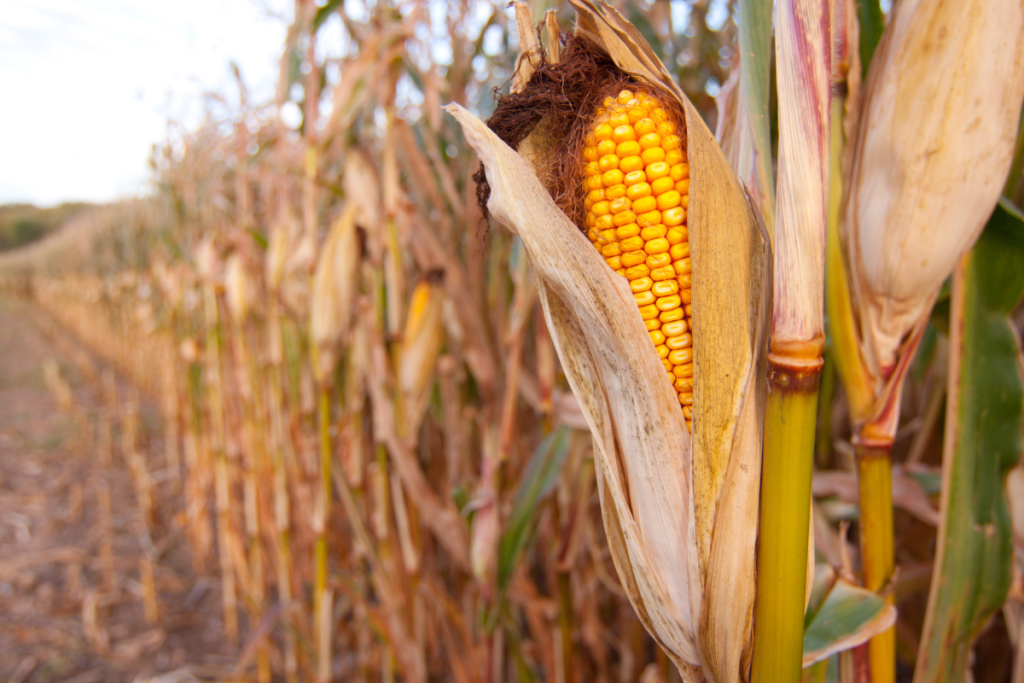Originally shared on October 28, 2025 on RealAgriculture by Bernard Tobin.
Corn harvest across much of Ontario is stuck in neutral as wet weather and high grain moisture levels keep combines from shifting to high gear.
On this episode of the RealAgriculture Corn School, BASF Canada agronomist Ken Currah and host Bernard Tobin discuss a difficult growing season for many areas and how those conditions are impacting harvest. Currah says the variable nature of the crop and the impact of drought can be seen in many fields, particularly in the central and eastern regions of the province.
In this Elgin County field, Currah is noticing a high level of broken stalks and stalk cannibalization, much of it due to drought preventing adequate levels of fertility from moving through the plant during the growing season. In these situations, Currah says it’s important to do a standability check on fields and if stalks do not survive a simple push test, growers need to be proactive and combine the crop as quickly as possible.
Probably the biggest issue holding up harvest is high grain moisture levels. As Currah notes in the video, it’s hard to understand why grain moisture remains stubbornly high in areas affected by drought. He says the situation can be linked to the impact of drought dormancy where drought causes the plant to shut down or go to sleep like a lawn does in the heat of the summer. But when moisture and ideal growing conditions arrive in the fall, the plant fires up again and then may be slow to mature and dry down to acceptable levels.
Currah reports that some growers are also surprised to see ear moulds that can produce mycotoxins and DON in the grain. He says reports have been typically below 2 ppm but it’s not typically something that’s seen in years when dry conditions persist through July and well into August. Currah points out, however, that in some ears moisture is trapped as husks dry up and tighten up against the tip of the ear. That moisture can then lead to silk channel infection in the fall and lead to ear moulds and the vomotoxin that produces DON.
When combines get rolling, Currah adds that the view from the cab does give growers an excellent opportunity to highlight weed problems and evaluate their herbicide program. He recommends growers be on the lookout for fall perennials such as dandelion that have been protected from frost by the corn crop.
Waterhemp is also a concern. There are a growing number of pockets of the weed in the province and Currah urges growers to take good notes if they identify it in a field. He stresses that waterhemp does move on mechanical equipment and it’s important to understand the movement of tillage and harvest equipment around the farm to track waterhemp movement and execute an effective control program.

